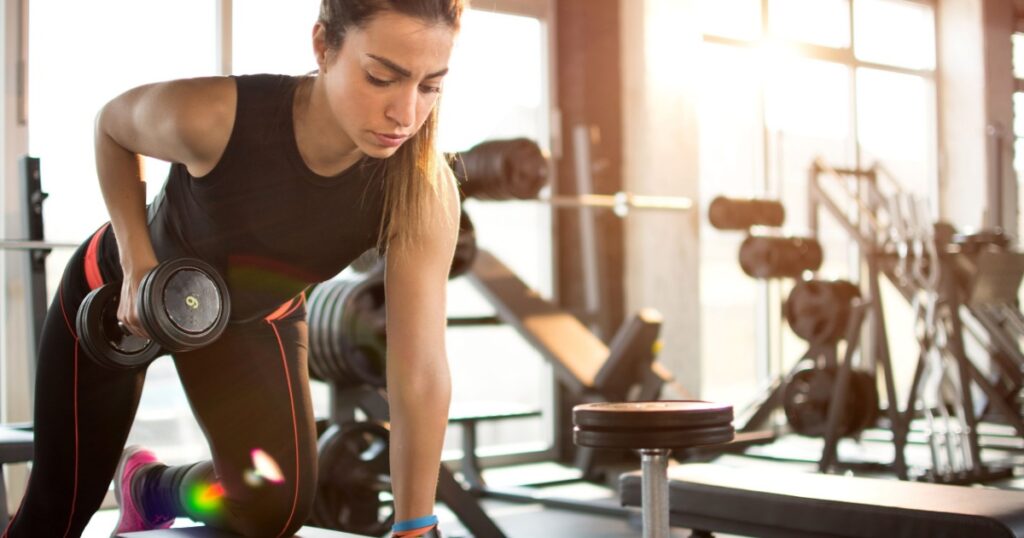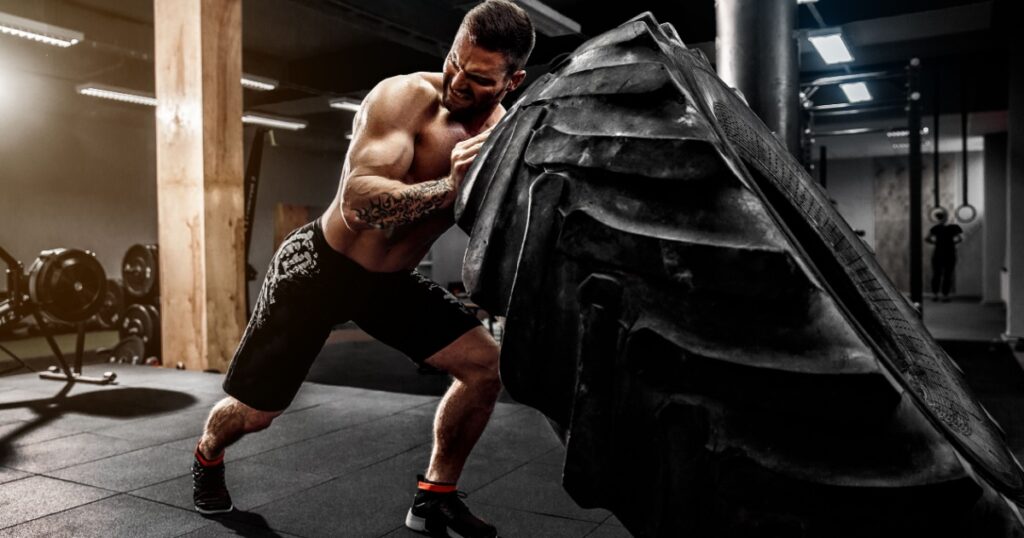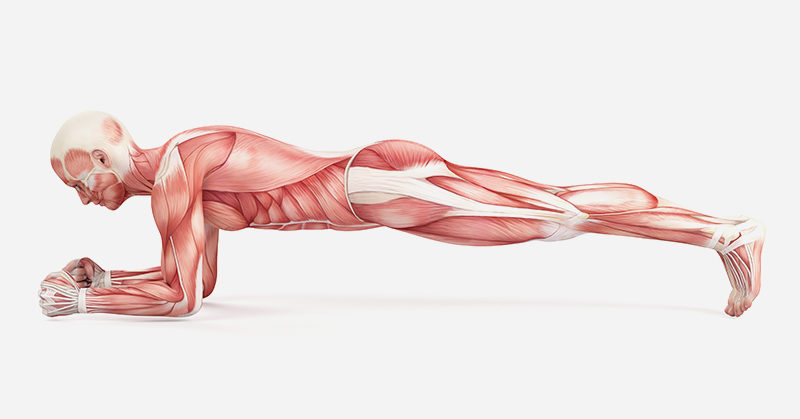Daily exercise is one of the best things that you can do for your health and longevity. Unfortunately, if you workout incorrectly it can do more harm than good. Avoid these common workout mistakes so that you will remain injury-free and healthy.
Common Workout Mistakes that Cause Injury

There are many exercises that you will find in nearly every workout routine that if you do them incorrectly, you can injure yourself. Take it from someone who’s experienced an injury before: This will seriously set you back from reaching your fitness goals.
Read More: 20-Second Workouts for Anyone Who’s Losing Muscle Due to Aging
1. Hip Bridge
When you are in a hip bridge, there should always be a straight line from your shoulders up to your knees – your hips should not go above that line. This puts unnecessary strain on your lower back and doesn’t provide any additional benefits.
2. Alternating Side Lunges
Often in order to get lower in a side lunge, people compromise their back position. Your back should always remain upright, even if you can’t get as deep into the position otherwise.
3. Plank
The most common mistakes when planking is either allowing your back to dip or having your bum up in the air. In a proper plank, you should have a perfectly straight line all along your spine.
4. Back Squat
In a back squat, your knees should stay behind your toes and your neck should remain in line with your spine. Your knees and ankles should also not cave in when you are squeezing your glutes to push yourself back up from the bottom position.
Read More: 10 Week No-Gym Home Workout Plan – No Equipment
5. Barbell Position
Often when people put a barbell on their back, they stack it higher on their neck and shoulders. This is dangerous for your neck. Instead, the bar should be placed just on top of your shoulder blades, which you are squeezing together to form a shelf.
6. Dumbbell squat
If barbell squats aren’t for you, then dumbbell squats might be better. That being said, an upright neck and back position are still extremely important for safety while squatting, even with a dumbbell.
Read: Your Bones Are Getting Weaker Year After Year, but There Are Ways to Keep Them Healthy
7. Deadlift
Though one of the best full-body exercises you can do, the deadlift can also be one of the most dangerous for your back if done incorrectly. Keeping your back straight and upright is most important, along with increasing weight slowly. If you can’t perform a rep with proper form, stop and decrease the weight.
8. Step-ups
The most common workout mistakes people make during step-ups are starting too far away from the platform they are stepping onto, collapsing at the waist when stepping up, and allowing their hips to drop when stepping back down. Start low and go slowly with this exercise to maintain form and get the most benefit.
Read More: A Full Body Workout in Only 7 Minutes!
9. Bench Press
Contrary to many other exercises, you actually do want your back to arch somewhat when bench pressing. You also want the barbell or dumbbells to be in line with your shoulders and your feet firmly on the ground.
10. Dumbbell Lunges
Whether you are backwards lunging, forwards lunging, or doing walking lunges, your form should always be the same. Your knee should remain behind your toe, your back and neck should be straight, and your knee and ankle should not cave in at any point throughout the exercise.
11. Bulgarian Split Squat
This variation of a squat or lunge is amazing for the legs and glutes when done properly. Keep your back straight and tall, shoulders back, and knee behind the toe. Again, keep your knees and ankles tracking properly throughout the movement.
12. Single-Arm Dumbbell Row
The two most important things to remember when doing single arm rows is to keep your neck straight and in line with your spine and not to allow your torso to twist open at all throughout the movement. When you row, your arm should only go so far to be parallel with your back, not further.
Read More: How to Help Accelerate Metabolism (Even After 40)
13. Overhead Tricep Extension
Hold the dumbbell with both hands, keep your pelvis tucked under your hips (don’t stick your bum out) and keep your core tight.
14. Standing Calf Raises
Approximately one-third of your feet should be on the platform with your feet stacked below your shoulders. When you raise up, you want to raise your heels as high as you can. If you need to, hold onto a railing.
15. Back Extension
This exercise can be done on the floor:
Back extensions can also be done using the back extension machine:
In both cases, it is important that you keep your core tight and that your neck always stays in line with your spine.
Read More: Tabata: Improve Your Fitness with 4 minute HIIT Exercises
Tips to Prevent Injury and Workout Mistakes When You Exercise

Workout mistakes don’t just mean improper form. There are other things you can do (or not do) that will hinder your performance and cause injury. Follow these general tips to help prevent workout-related injuries.
Before You Workout

- Talk to your doctor: Particularly if you have pre-existing conditions, this is an important step in making sure that this exercise routine is going to be right for you, your body, and your body’s limitations. (1)
- Be thoughtful when choosing your workouts: Understand your body and where your current level of fitness is at and choose your workout based on that. For example, people with conditions like osteoporosis and arthritis should avoid high-impact exercise and are better off choosing ones like swimming or the elliptical machine. (1)
- Learn proper form: Bad form is one of the number one reasons people injure themselves while working out, especially when weights are involved. Take the time and if you can, spend the money to work with a qualified trainer for a few sessions who can teach you the correct form. If needed, consult a physiotherapist if you have specific conditions you are concerned about. (1)
- Wear the right gear: A proper pair of running shoes and clothing you feel comfortable and can breathe in go a long way. If you are unsure, visit a running store or a podiatrist. (1)
During the Workout

- Start slowly: Doing too much, too hard, too soon is another one of the biggest reasons people get injured. Start slowly and go easy on yourself, especially if it has been a long time since you last exercised. Allow your body time to build endurance and get strong before you start pushing yourself really hard. (1)
- Warm-up: Warmup is one of the most important parts of the workout. Cold, unprepared muscles, joints, and ligaments are far more injury-prone than prepared ones. A proper warmup gets your heart rate going, makes you breathe a bit heavier, and includes dynamic stretches and activation exercises. (1)
- Hydration: Really, being properly hydrated is important before, during, and after working out. Dehydrated muscles and systems can’t function properly, so not only will your workout feel harder, but you’re more likely to do yourself more harm than benefit. (1)
- Cooldown: The cooldown is an equally important part of the workout but is often rushed through or not done at all. Take time to do a slow walk or stretch, and as always take in proper fluids and nutrition. (1)
After/Always

- Variety: Doing the same thing over and over again can cause what are called overuse injuries. On top of that, your progress toward your goals will eventually stagnate. Changing your workouts up will both challenge you and force your body to move in different ways, promoting both recovery and mobility. (1)
- Know when to stop: This is the hardest one because it can be difficult to understand when you should push through or say enough is enough. Remember that there is a difference between “pain” from a challenging workout and actual pain from an injury or something that isn’t quite right. Learn the difference so that you know when to call it quits. (1)
Workout Mistakes: The Bottom Line

Regular exercise is important for everyone, so making sure you’re aware of workout mistakes is important. What a workout will look like, however, will change depending on your goals, age, health status, preexisting conditions, and any other constraints. Whatever workout you choose, if done carefully and thoughtfully, it will help you become the healthiest, strongest, and happiest version of yourself possible.
Read More: 10 Stretches to Relax Your Spine After a Hard Day

















